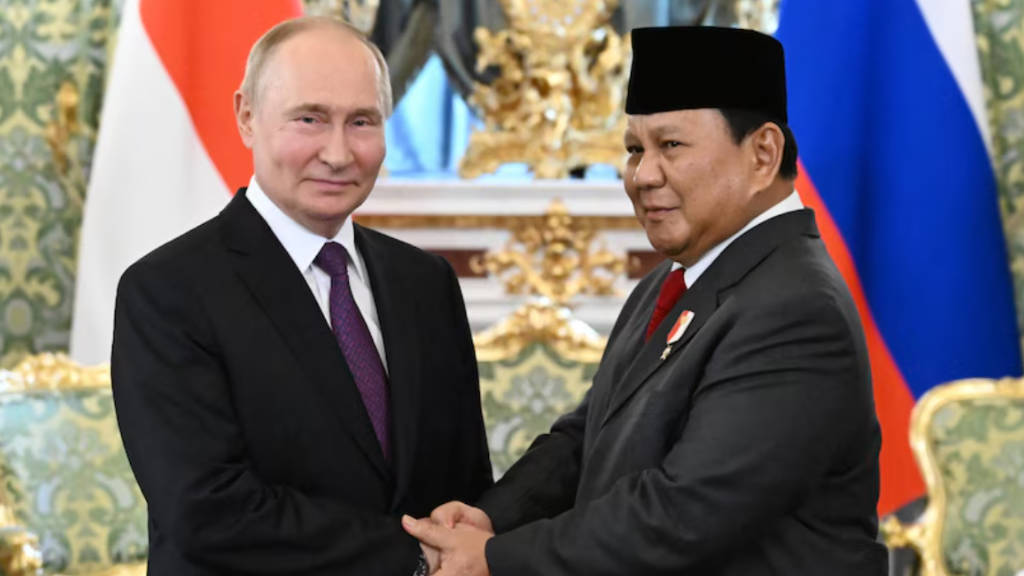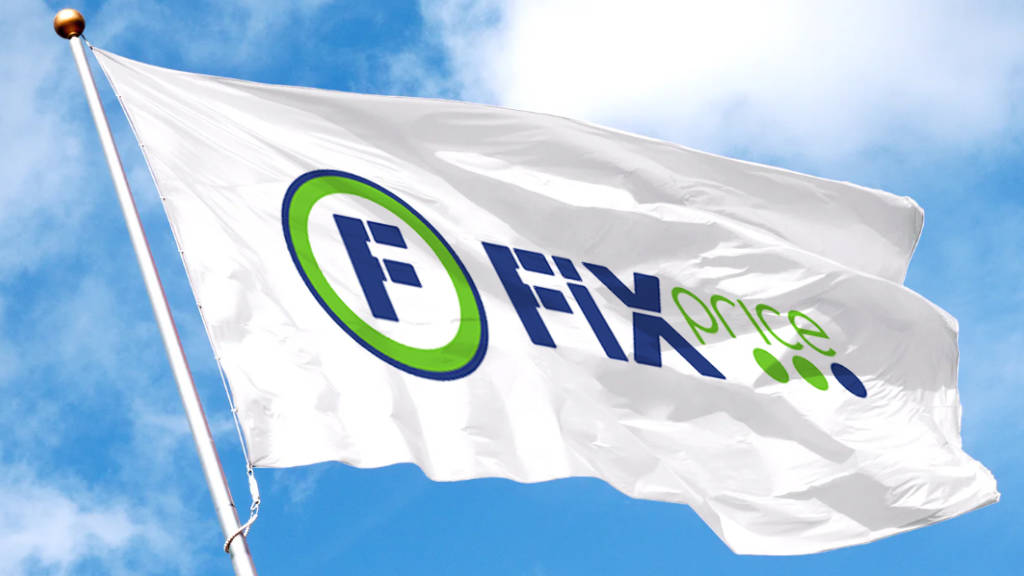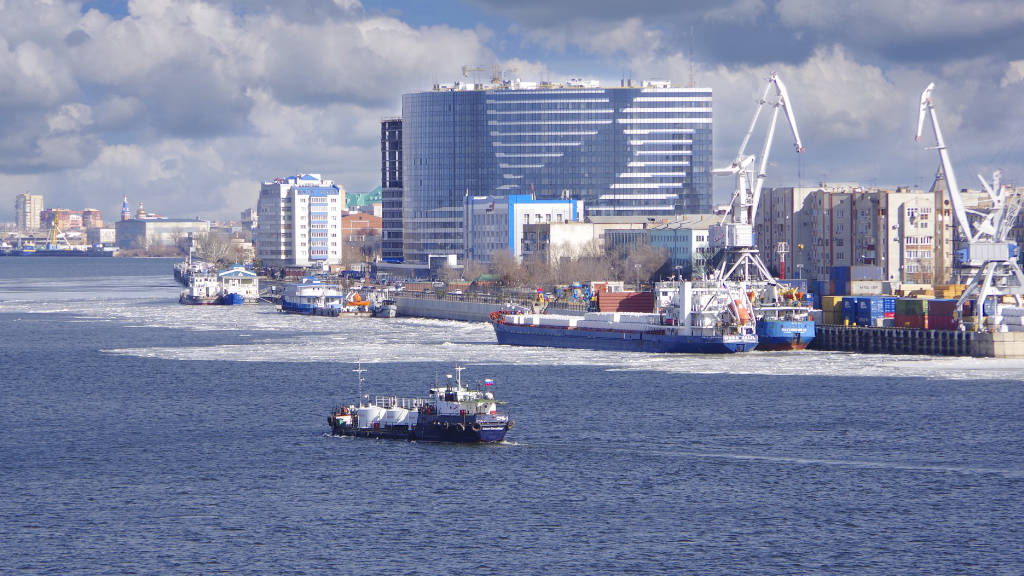
The Caspian Sea region has a complex maritime transport infrastructure, with Azerbaijan, Kazakhstan, Turkmenistan, Iran and Russian ports all involved in its development. Despite the fact that the Caspian Sea is essentially landlocked, several international transport corridors pass through it. Goods are in transit to Europe, the Caucasus, Turkiye, the Middle East, Central Asia, East Africa and South Asia, rendering the maritime capabilities of the Caspian Sea a top priority for Russia’s pivot to Asia.
Combining these countries are several multilateral unions, including the Eurasian Economic Union (EAEU), the Commonwealth of Independent States (CIS), the Shanghai Cooperation Organisation (SCO), the BRICS, and Chinese investment with the Belt & Road Initiative. It is also governed by the Caspian Summit, which includes all littoral states and regulates shipping activities between them.
With today’s geopolitical changes, new, mutually beneficial economic relations are being established, part of which are globally important as they affect the availability of oil and gas in the Caspian region and beyond, largely determining its economy, investment policy, foreign trade, transport routes and logistics. This includes supplies to the EU.

Russian Energy Investments In The Caspian Sea
The Caspian Sea is unique – it is surrounded by five countries with significant oil and gas resources, whose exports face challenges, both economic and political. The current geopolitical situation has not stopped Russia’s oil and gas projects in the Caspian Sea, but the deadlines for the development of some fields have been brought forward.
Lukoil is the leader in terms of the number of projects in the Caspian Sea, having an accumulated production in the Russian sector of its territory in excess of 50 million tonnes of liquid hydrocarbons. The company has discovered 11 deposits on the Russian shelf of the Caspian Sea – six of these are significant, and multi-layered.
Most of the deposits are located in the north of the Caspian Sea, near Astrakhan. Lukoil has signed an agreement with the regional authorities on a socio-economic partnership for the joint development of the mineral resource base of hydrocarbons. It is also planned to produce oil at a site located in the Kazakh sector of the Caspian Sea.
Dagestan, Russian territory in the eastern Caucasus, is also interested in cooperation with oil companies in the Caspian Sea, stating that there are 44 license areas with total reserves of oil and gas condensate of 16.7 million tonnes, with production carried out by PNK Rosneft-Dagneft, and Dagneftegaz.
Oil from the Russian sector of the Caspian Sea mainly flows through a network of oil pipelines in Russia itself. Part of the oil through these enter China in transit through Kazakhstan. Investment plans for hydrocarbon projects in the Caspian Sea are being refined taking into account contemporary Russian objectives and production forecasts under sanctions, as guaranteed markets for raw materials are required to justify the investment.
Kazakhstan Caspian Energy Cooperation
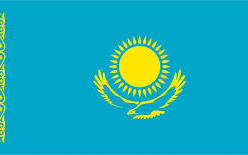
Kazakhstan is second only to Russia in terms of oil production in the CIS. More than 80% of Kazakhstan’s oil production is exported, mainly by pipeline transport. The largest of Kazakhstan’s oil pipelines, the Caspian Pipeline Consortium (CPC), has a capacity of 67 million tonnes per year, and connects large fields in Kazakhstan’s Atyrau region with Russia’s Novorossiysk Port. In addition, oil is shipped via the main pipeline to Russian refineries in Orenburg and the Kuibyshev Refinery in Samara.
Export shipments by rail go through the Beineu border station in the republics of Central Asia; through the Aksarayskaya and Ozinki border stations to the west; through the Dostyk and Altynkol border stations to China.
Aktau port is the largest Kazakh Caspian Sea port, with transports dry cargo, oil and petroleum products (10 million tonnes per year) in international traffic. In 2023, almost 2 million tonnes of oil were shipped to Makhachkala, in Russia. In addition to oil, non-ferrous metals, chemical products, cereals, and consumer goods were shipped.
Kuryk port is also being developed, where it is planned to create a specialized oil loading terminal with a production capacity of up to 56 million tonnes per annum with a tank farm and outrigger oil pipelines for servicing large-tonnage vessels. Shipping through this port will reduce the distance by sea to Azerbaijani and Iranian ports by about 60 miles.
Turkmenistan Caspian Energy Cooperation
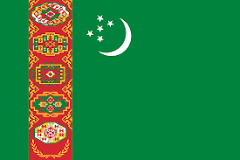
Turkmenistan’s hydrocarbon resources are estimated at more than 20 billion tonnes of oil and over 50 trillion cubic metres of natural gas. Turkmenistan has been exporting oil through the Baku-Tbilisi-Ceyhan (BTC) oil pipeline for over a decade; oil is delivered to Baku by tankers with further loading into the pipelines. Small volumes of gas are also supplied to Azerbaijan in transit through Iran.
Russian and Turkmen cooperation is also unfolding in the oil and gas sector, the electric power industry, renewable energy sources, and nuclear power. Russian companies provide their services in modernizing Turkmenistan’s electric power grid with the involvement of domestic contractors for the supply of equipment. For example, the Russian company Power Machines (based in St. Petersburg) is involved in the modernization of the Mary hydroelectric power station and a thermal power plant in Turkmenbashi, the strategic Caspian port city. Russian oil companies also participate in joint projects to develop fields in Turkmenistan, and the construction of gas infrastructure in the Caspian Sea.
By 2030, it is planned to build the fourth branch of the gas pipeline to China, a branch of the gas pipeline to Iran, as well as the laying of the Turkmenistan-Afghanistan-Pakistan-India (TAPI) gas pipeline.
The processing of hydrocarbon raw materials is also developing in Turkmenistan: gas chemical complexes are being built to produce linear low-density polyethylene, isobutane, methanol, polyvinyl acetate, liquid chlorine, sodium sulphate, and related commodities.
Azerbaijan Caspian Energy Cooperation

The development of the Caspian resources has always been a priority for Azerbaijan, which in 2023 began production of the first gas at the Absheron field, is reaching the peak of gas production at the key Shah Deniz field (26 billion cubic metres per annum).
In its oil and gas operations, Azerbaijan provides the capacity of the Baku-Tbilisi-Ceyhan oil pipeline for the transit of oil from Turkmenistan and Kazakhstan and is planning to increase the capacity of this strategic oil pipeline (currently 1.2 million barrels per day).
A critical region for Russia-Azerbaijan trade cooperation is Dagestan. The cargo turnover between the latter and Azerbaijan by rail has quadrupled since 2022 after the removal of restrictions on the movement of nightly freight trains. Cargoes are mostly heading to the Middle East, which can access the region via Iranian ports. The expansion of the INSTC is especially telling. In the first six months of 2023 around 800,000 tonnes were transported along the corridor – a striking increase with 2022 when 250,000 tonnes of cargo were sent. Russian officials are hopeful that by 2025, cargo turnover through the INSTC could reach 30 million tons, and by 2023 up to 35 million tons. Russian-Azeri JV’s are also operational in Azerbaijan’s energy sector.
Iran Caspian Energy Cooperation
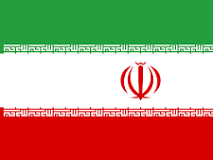
Iran has not yet ratified the Convention on the Legal Status of the Caspian Energy Reservoir and, in general, does not pay much attention to the search for hydrocarbons in the Caspian Sea, focusing on the Persian Gulf and other regions of the country, whose oil and gas reserves are disproportionately greater than in the Iranian Caspian basin. There is no Iranian oil player in the Caspian Sea yet. But this will change.
Caspian Food Security
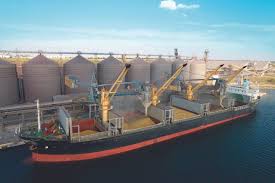
Along with oil and gas, agricultural products are strategically important, ensuring the regions food security. This issue is pertinent for all the countries of the Caspian region, with Russia a major exporter of grain and fertilizer.
For the transportation of agricultural goods, most of which are inexpensive, the development of an affordable logistics infrastructure and distribution network is important without unnecessary transhipment and transport changes. Such products in large volumes, cheaply and over long distances are usually transported by water or by rail. However, at present, railway capacity in the Caspian region is limited, and their condition is not the best.
Meanwhile, even though port capacity is expanding in the Caspian Sea, the Caspian’s logistics capabilities are still not fully utilized. Current statistics suggest that with a possible cargo transhipment across the Caspian Sea in the amount of 130-140 million tonnes per year, currently only 30-40 million tonnes of port capacity is used, being just 20-30% of the potential involved in international cargo transportation.
The Russian Federal centre Agroexport considers Azerbaijan primarily as a transhipment point for agricultural cargoes to Iran and the Persian Gulf, through the INSTC. Azerbaijan, with a clear and predictable policy, could import more Russian grain and re-export it to international markets.
Azerbaijan is also a key buyer of Russian grain, purchasing more than 1 million tonnes for domestic consumption, which allows it to consider additional options for international trading, as well as opportunities for transhipment and grain processing. A new grain terminal in Govsan port has production facilities for the transhipment of up to 1,000 tonnes per day from ships and railway wagons. This line is reversible. The terminal also has a mill complex producing high-quality flour with a capacity of 150 tonnes per day.
Caspian Shipbuilding
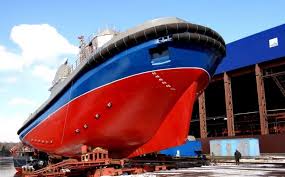
Despite the fact that Azerbaijan is not a member of the EAEU, it has become Russia’s main partner in the Caspian Sea, including in the transport sector, and also in the construction of tankers. Russia and Azerbaijan are currently connected by the existing Baku-Novorossiysk oil pipeline with a capacity of 5 million tonnes of oil per year, but this is no longer enough to meet demand.
Russia and Azerbaijan also agreed on the joint construction of modern river-sea class tankers during a meeting in Baku in August this year, with Russia’s United Shipbuilding Corporation participating in conjunction with Azerbaijan’s Baku Shipyard.
Through these joint efforts, Moscow and Baku can upgrade their domestic tanker fleets and also build ships for customers from third countries. For example, Kazakhstan is increasing oil supplies by sea through the Caspian Sea and has already announced its demand for new tankers in the Caspian region.
Russia is interested in tanker deliveries of petroleum products to Iran. In northern Iran, there are fuel shortages, with much Iranian oil of poor quality and in need of refining. Both Azeri and Russian refineries can assist, while investment also made to improve Iran’s capabilities. However these options also require an expanded fleet.
Shipbuilding cooperation also extends to the tourism sector: Russian liners will offer cruise along the Caspian Sea from Azerbaijan. These include three new generation cruise liners, such as the Karelia 00840, which will be commissioned in 2025-2026. It is planned to involve them in cruises visiting an all-Caspian cruise taking in the Makhachkala, Aktau, Turkmenbashi, Baku and Enzeli ports.
Cruises will also serve to increase tourist traffic between the Caspian littoral countries, especially as many of them have a visa-free regime. Passengers will have the opportunity to visit several countries by departing from one point.
The search for alternative routes for transhipment of dry, containerized and road cargo through the Caspian region has increased the demand for rail and ferry transhipment. Azerbaijan’s Caspian Shipping Company is a leader in this field and continues to increase its fleet. By 2030, the company plans to increase its fleet by an additional 50 vessels, including cargo and passenger ships, ferries, tankers, tugs, boats and crane vessels. Currently, 13 ferries of various series, 2 Ro-Ro vessels, and now two Ro-Pax ferries are transporting vehicles and wagons in transit through Azerbaijan in the Caspian Sea.
Azerbaijani shipbuilders also plan to accept orders for ships from other Caspian littoral countries.
In terms of cargo capacity and versatility, the newly commissioned ferries surpass all existing vessels of this type in the Caspian Sea: they are designed to carry 100 passengers, 56 tank wagons or 50 heavy-duty vehicles. Ferries have a maximum load capacity with a minimum draft, they are equipped with a balance system to cater for bad weather conditions, as well as freight elevators, traction locomotives and a helipad.
New Caspian Shipping Lines & Ferry Services
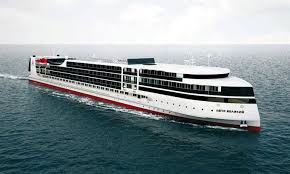
At present, the Azerbaijan Caspian Shipping Company is the only railway and ferry operator in the Caspian Sea and carries out transportation to the ports of Aktau and Turkmenbashi. Ferries do not yet go to Russian ports – but this is purely a matter of time.
Russia meanwhile is interested in establishing regular shipping service between its Astrakhan and Turkmenistan’s Caspian ports, which also serve as an access route for Russia to the Iranian ports in the Persian Gulf.
The opening of a regular shipping line between Russia’s Olya port and Turkmenbashi will significantly reduce the delivery time of goods. It will contribute to the formation of additional cargo traffic along the North-South corridor and in the future will ensure the effective operation of the logistics centre of Turkmenistan in the Astrakhan region.
On May 4, 2022, Iran’s northern Noushehr port received the first Russian cargo ship of the “Ro-Ro” type for the first time in 21 years. Agreements were subsequently concluded on the creation of a joint shipping company and the development of the production of large-capacity vessels at Iranian shipyards and cargo ships at Russian shipyards.
In 2023, Iran’s national shipping lines ordered a ship from Russia for use between Iran and Russia’s Solyanka port in Astrakhan, which the two countries are jointly developing. The vessel is of a type capable of carrying all types of cargo.
The next step was a pilot shipment of cargo along a multimodal route from Solyanka, to Iran’s Bender–Enzeli Caspian Sea port, then multimodal transport through Iran overland to its Persian Gulf ports at Bander–Abbas and Chabahar, to Nava–Sheva port in India’s Mumbai.
The decisive role was played by Solyanka port, in which 53% of the port shares belong to the Iranian Shipping Company, which invested US$10 million in the port development. Iran has a consulate general in Astrakhan, as well as a branch of its “World Business Bank”, which plays a role in banking transactions between Iran and Russia.
In October 2022, Russia announced its intention to allow Iranian ships to pass through the Volga river and access Russia’s internal ports and cities. These include cities with populations more than 1 million, and includes Kazan, Nizhny Novgorod, Samara, Volgograd, Saratov, Tolyatti, Yaroslavl and Astrakhan. This is significant, as Russia has not previously permitted foreign ships to pass through the Volga and use the Volga–Don Canal.
Iranian ships previously had to reload their containers onto Russian ships in Astrakhan port so that the cargo could reach its destination within Russia or move further into the Black Sea through the Volga–Don Canal.
During the 2023 navigation season, the Russian government authorized multiple passage for 17 Azerbaijani vessels, and in 2017 – for two Iranian vessels. In each case, these were specific vessels with a displacement of up to 3,000 tons. The modernization of the Volga-Don Canal will allow vessels twice the size to pass through. In 2022, Russian President Vladimir Putin signed a law that gives the Russian government the right to set sailing rules in the country’s internal sea waters for foreign-flagged vessels, including those flying the flags of EU countries – even if they did not already self-sanction themselves out of access to this market region.
The Caspian Sea as a Single Transport Hub
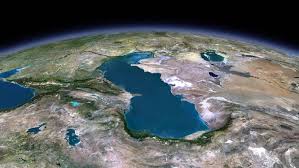
There are differing opinions about the long-term prospects for the Caspian transport corridors. Will they become only transport routes, or further develop as industrial links between the Caspian nations, also servicing markets elsewhere?
In the long term, it is possible to create two transport and industrial circuits along Caspian routes. The first will be focused on distributed commodity and agricultural exports outside the Caspian region – grain, fertilizers, energy products and gas chemicals, while the second circuit will be used for the production of goods for the regional Caspian market formed by the five countries.
This development directly depends on the volume of production of goods of the first and second stages of raw material processing. This includes both energy sector and agricultural processing, as both industries are in demand in terms of volumes, supply costs and their role in food security, while the gas chemical complex is the main producer of raw materials for fertilizers.
As an example of the potential demand for Caspian products, we can note Pakistan’s needs for urea, as a key component in the manufacture of fertilizers. At Pakistan’s last negotiations with Azerbaijan and Russia, they discussed the supply of 200,000 thousand tonnes of this product. Azerbaijan produces urea, and in turn is interested in increasing supplies from Russia of more than 200,000 tonnes of fertilizers of various types per annum.
Fertilizers are needed both for the regional market of the Caspian five and beyond into Central and South Asia. In the coming years, an ammonia-urea complex will be put into operation in Kazakhstan’s Aktau Special Economic Zone (SEZ), after which the total volume of urea production in Kazakhstan will triple. As a result, the Caspian region could also become an exporter of fertilizers, which then sets the task of building hubs and distribution centres for this type of product.
A similar task also arises with the expansion of grain exports from the Caspian region. The main role in the creation and development of transport and industrial hubs will be played by regional SEZs, which are mainly localized at seaports or include port infrastructure. These include SEZ at Alate (Azerbaijan), Lotus (Russia), Enzeli (Iran) and Aktau (Kazakhstan).
SEZs in the Caspian Sea are connected to transport hubs in port areas where connections between railway and road transport communications occur. All Caspian ports must be united by a grid of agreements that would allow the rapid movement of cargo in all directions, as well as the production of services and products that ensure this movement. This means the production of packaging, assembly and repair of containers, including refrigerated ones. This project is already starting in Astrakhan, where the processing of agricultural and other products that are in demand along these routes is occurring. There are significant development opportunities here both for Russian and other investors.
In industrial parks under the SEZ it will be necessary to create a service network for medium and small-scale import substitution of spare parts of imported foreign equipment for maintenance purposes. Cooperation between the SEZ of the Caspian Five will reduce the costs for financial transactions, provide tax incentives and allow for more seamless trade transactions within the region, as well as further afield east into Central Asia and China, to the Middle East, East Africa and southeast to Asian markets such as India and beyond.
This article has been translated and adapted from the November 15 article in Russian Transport News. The original may be accessed here.
Further Reading
Trans-Caspian International Transport Route Bottlenecks Discussed


